May 24, 2025 | 16:22 GMT +7
May 24, 2025 | 16:22 GMT +7
Hotline: 0913.378.918
May 24, 2025 | 16:22 GMT +7
Hotline: 0913.378.918
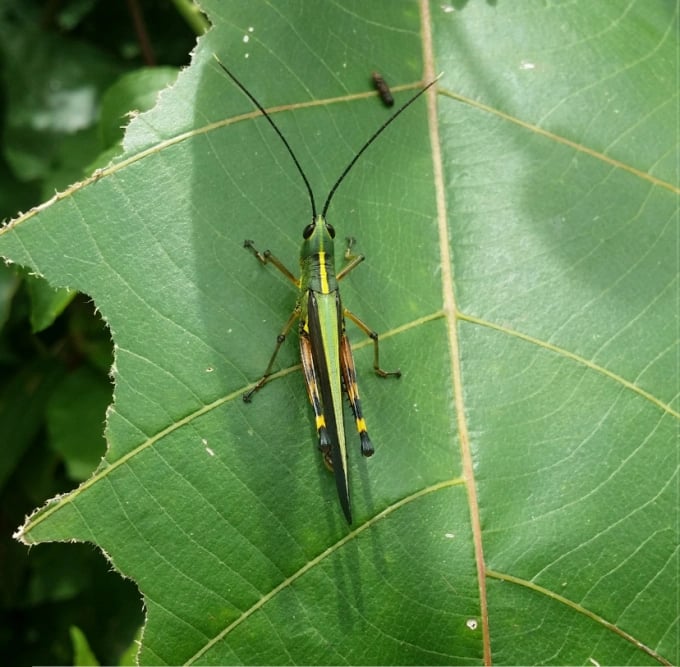
An adult yellow-spined bamboo locust. Photo: Department of Plant Protection.
Some people said it was desert locust while others said it was yellow-spined bamboo locust. So, what are the differences between the two types of locust?
We asked the Plant Protection Department under the Ministry of Agriculture and Rural Development for an answer. Here is the reply from the department:
In the latest reports to Government, the Agriculture and Rural Development affirmed that desert locust has not appeared in Vietnam. So, it’s yellow-spined bamboo locust that appeared and damaged crops in some northern mountainous provinces.
Yellow-spined bamboo locust is a native species in Vietnam. It eats bamboo leaves, corn and rice. The locust appears and damages crops in some particularly provinces, commonly northern mountainous provinces, and travels to border areas of Vietnam and Laos or those between Vietnam and China.
Yellow-spined bamboo locust has scientific name Ceracris Kiangsu Tsai (Acrididae; Orthoptera). A mature one is green with yellowish belly and clear stripes on the spine. It’s 3.1-4.2 cm long. The male locus is smaller than the female one.
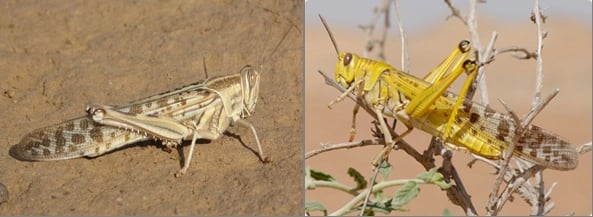
Adult desert locust is yellowish or brownish with brown spots on wings.
Eggs of the yellow-spined bamboo locust are 0.6-0.8 cm, relatively curved and brown. The eggs are usually laid in bamboo forests in the eastern side of the mountain where there is plenty of sunlight and soil is not too hard.
Eggs are sprinkled with a sticky semisolid substance that sets to form an egg pod. Each egg pod contains 22 to 24 eggs. A mother locust usually lays six egg pods, sometimes up to 25 egg pods.
Baby locust looks like adult ones but does not have wings or reproductive organs.
Newly hatched locusts are light yellow, then turn black-green and golden brown after 3-4 hours, their body is about 1 cm long; a locust at age 3 looks reddish-brown, black back and yellow middle stripe; at age 4 and 5 they are green and yellow.
Meanwhile, the desert locust has a scientific name Schitocerca gregaria (Acrididae; Orthoptera). The adult desert locust is light yellow or light brown with brown spots on wings. Desert locust is about 4.5-6 mm longer than yellow-spined bamboo locust.
Desert locust lays on average 2-4 egg pods. Each pod contains about 100-160 eggs. The eggs are not curved, light brown and about 0.7-0.8 cm long.
Unlike yellow-spined bamboo locust, the desert locust lays eggs in wet sand at the depth of 5-10 cm underground. Baby desert locust has 5 or 6 ages. Newly hatched locust is white and then turns black green after 1 or 2 hours. Until age 4, it turns brown or yellow with big black spots on its body.
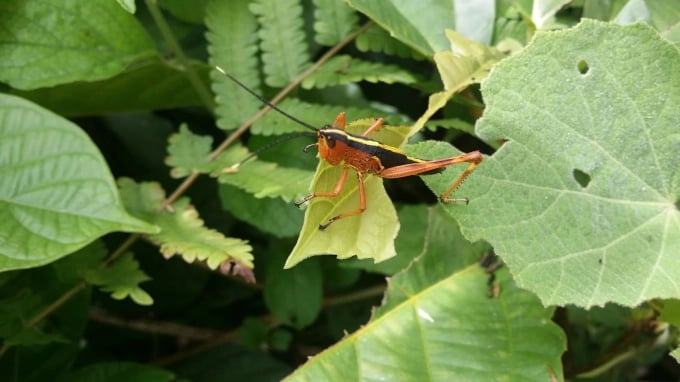
At age 3, yellow-spined bamboo locust is reddish, black-backed and a yellow-spined. Photo: Department of Plant Protection.
Young locust looks like an adult one but it does not have wings or reproductive organs.
In terms of population, a population of the yellow-spined bamboo locust is usually small with about 10,000 individuals. When moving, the locust population stretches a few kilometres or dozens of kilometres. Meanwhile, a population of desert locust can contain millions of individuals and sometimes up to billions of individuals, stretching 7-8 kilometres when they fly.
Some studies found that a desert locust population could travel 120-150 km daily.
Author: Le Ben. Translated by Minh Van. Edited by Duc Huy.
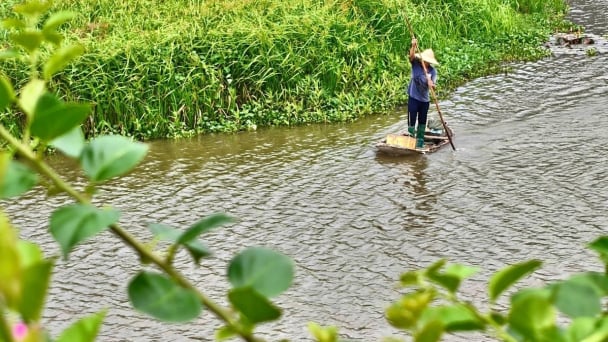
(VAN) In the tranquil wetlands of Van Long, there are quiet souls who guard the forests, nurture the waters, and oversee every bird and troop of langurs as protecting the essence of a living heritage.
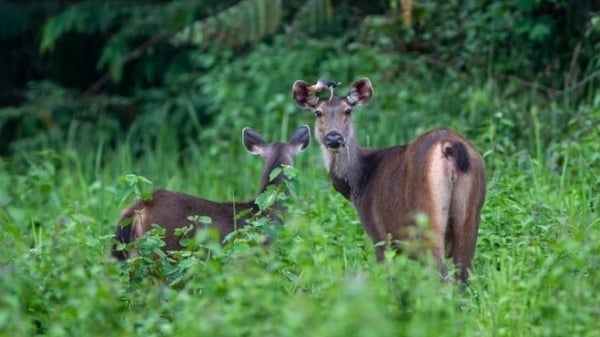
(VAN) WWF, GIZ, IUCN, UNDP call for biodiversity conservation and sustainable development must be regarded as a unity in strategies for a green future.
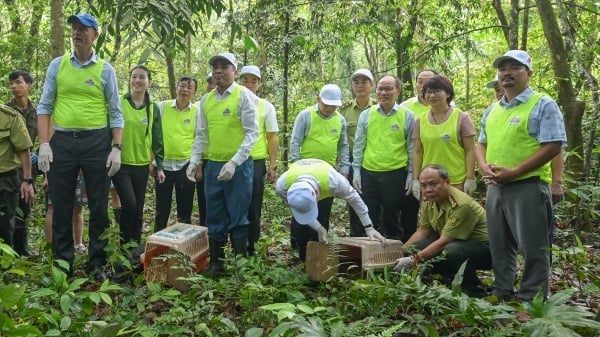
(VAN) On celebration of International Day for Biological Diversity, Deputy Minister Nguyen Quoc Tri called for practical actions to address nature and biodiversity conservation.
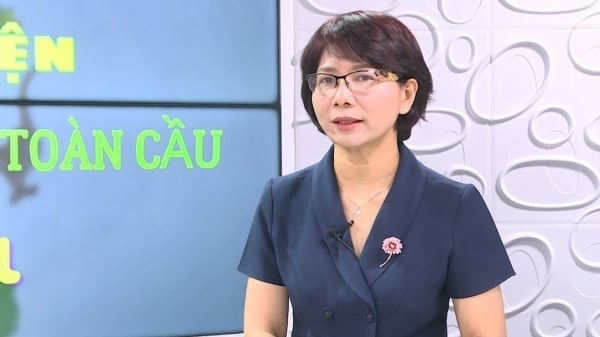
(VAN) Dr. Hoang Thi Thanh Nhan – Deputy Director of the Nature and Biodiversity Conservation Agency – highlighted this on the International Day for Biological Diversity, May 22, 2025.
![Ho Chi Minh city adapts to climate change: [2] Accelerating action](https://t.ex-cdn.com/nongnghiepmoitruong.vn/608w/files/chiqk/2025/05/22/4024-4220-bien-doi-khi-hau-1-100626_766.jpg)
(VAN) Clearly recognizing the challenges posed by climate change, Ho Chi Minh city has swiftly shaped its policies and implemented practical solutions to adapt.
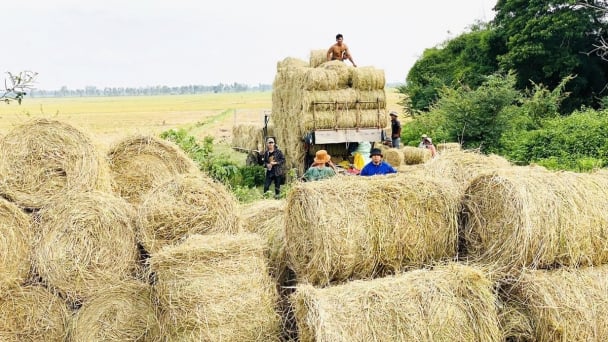
(VAN) Rice straw is no longer just a discarded byproduct, but it is becoming a green resource that helps farmers in the Mekong Delta reduce emissions and promote circular, sustainable agriculture.

(VAN) Other Effective Area-based Conservation Measures (OECMs) are solutions that contribute effectively to achieving the goals of the Kunming–Montreal Global Biodiversity Framework.